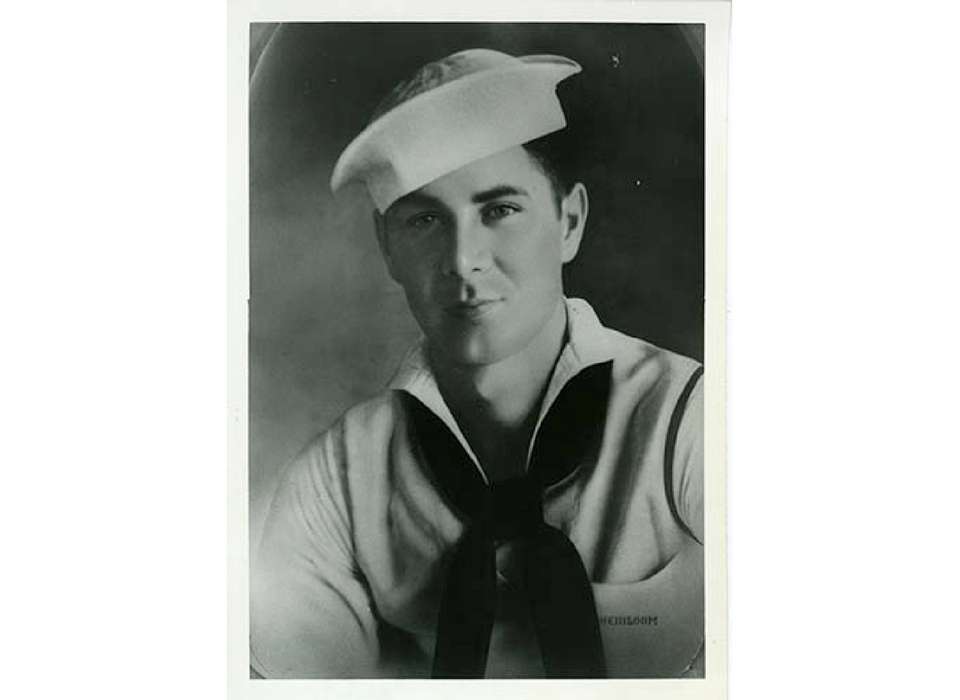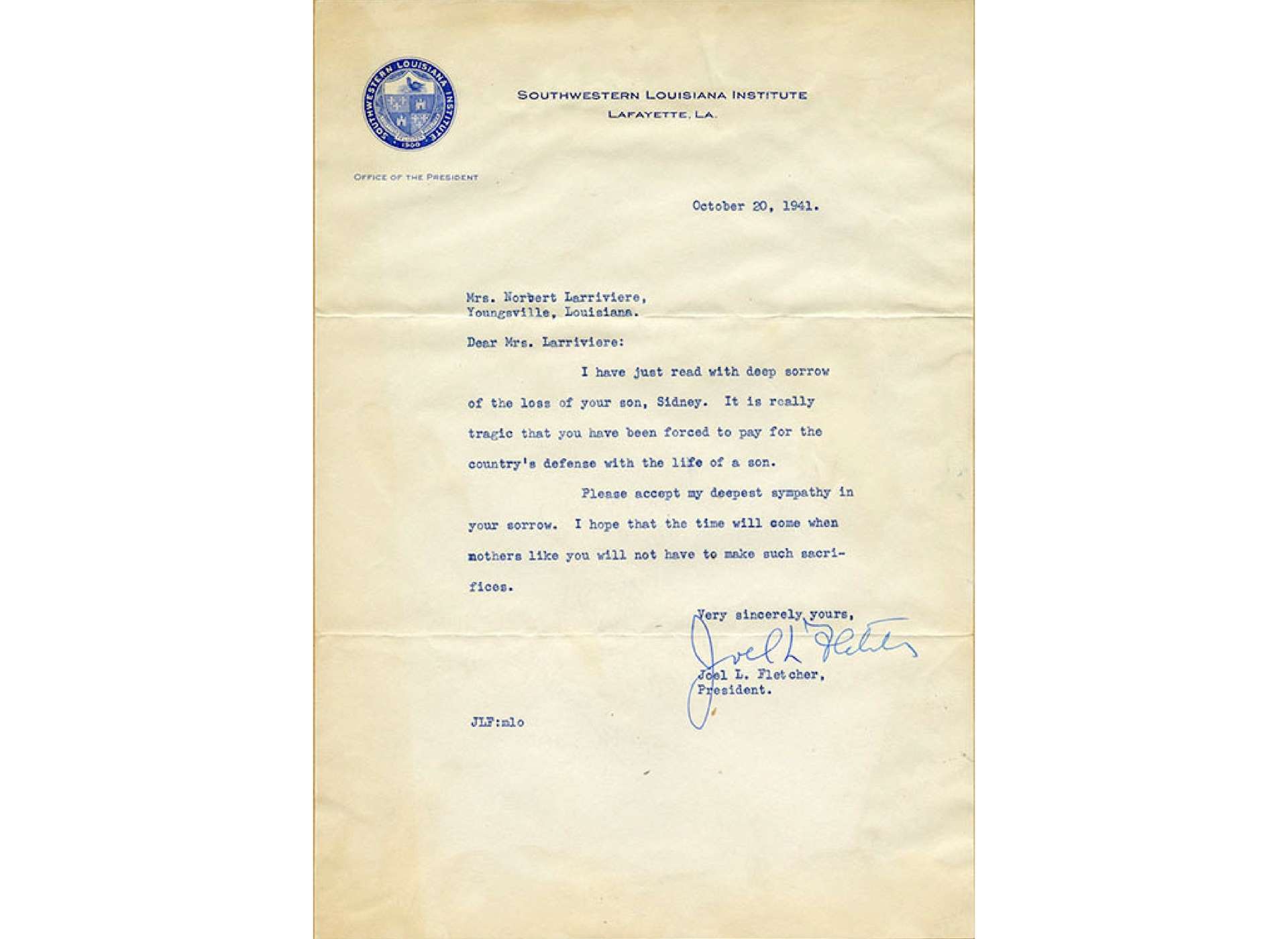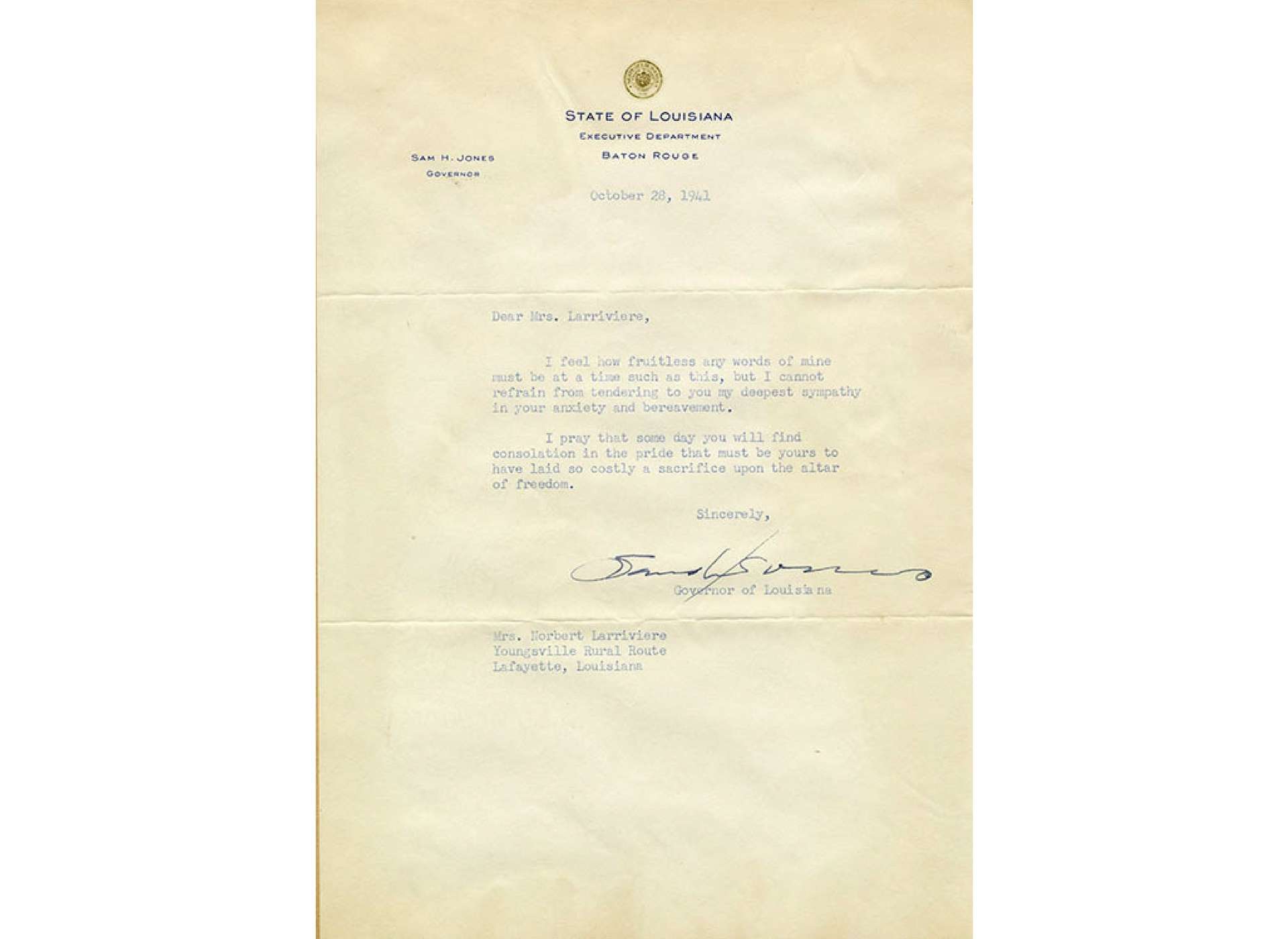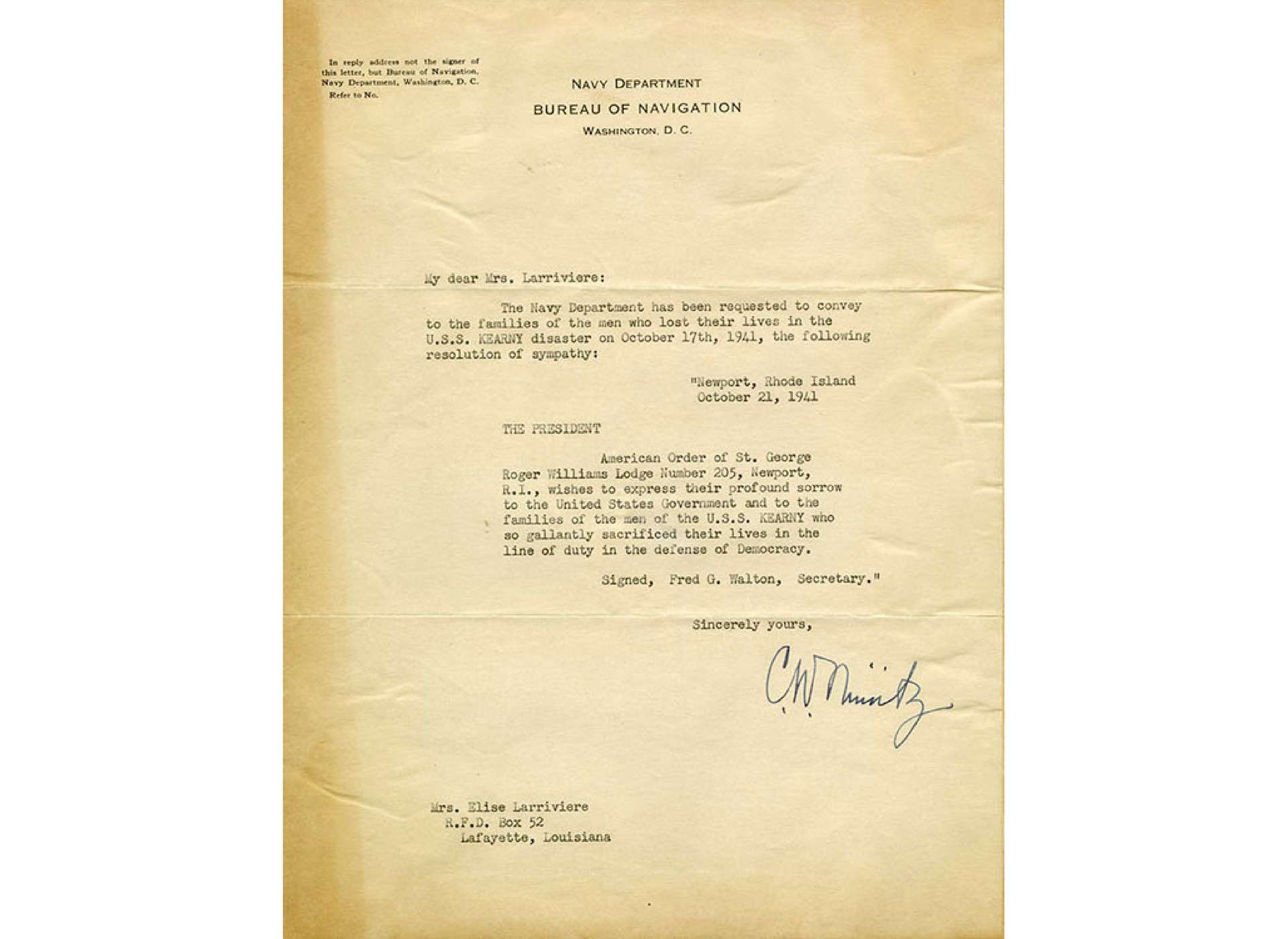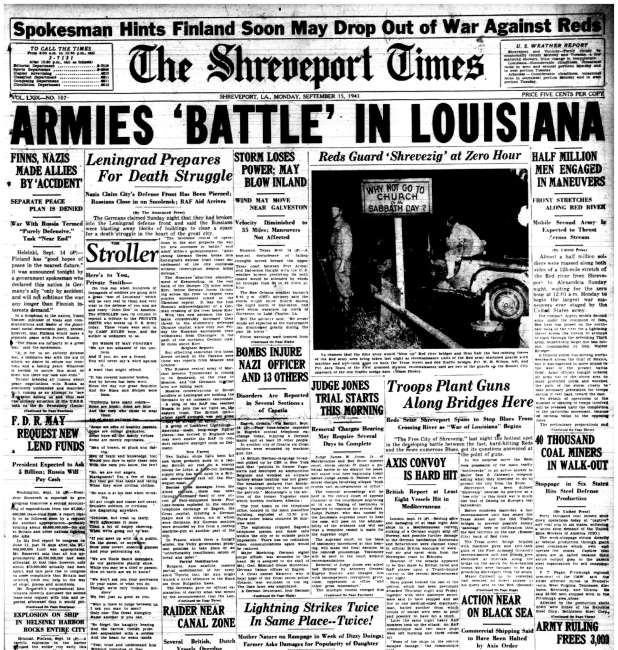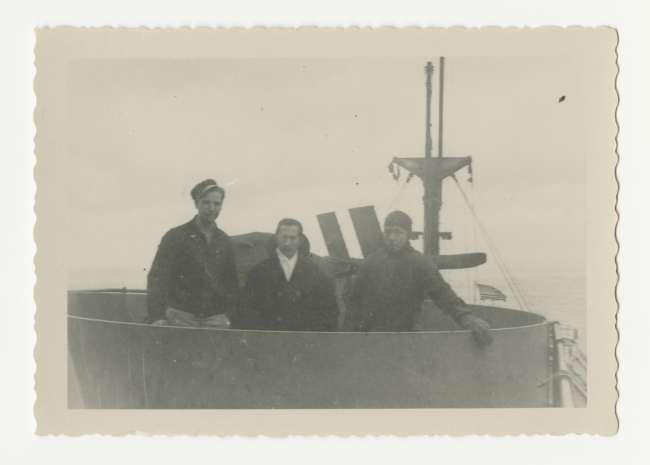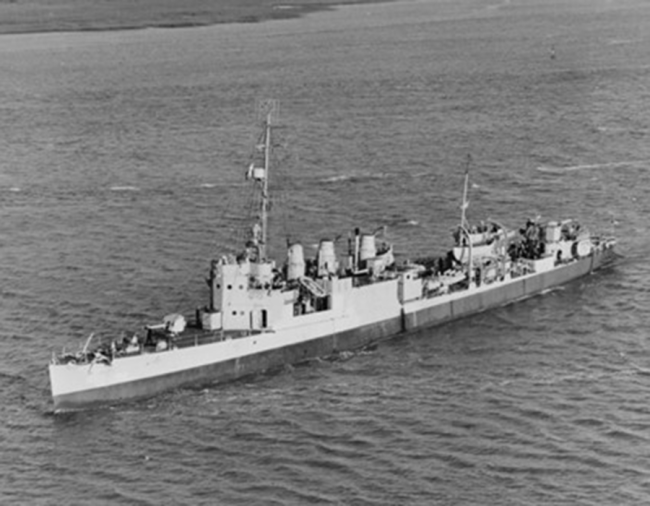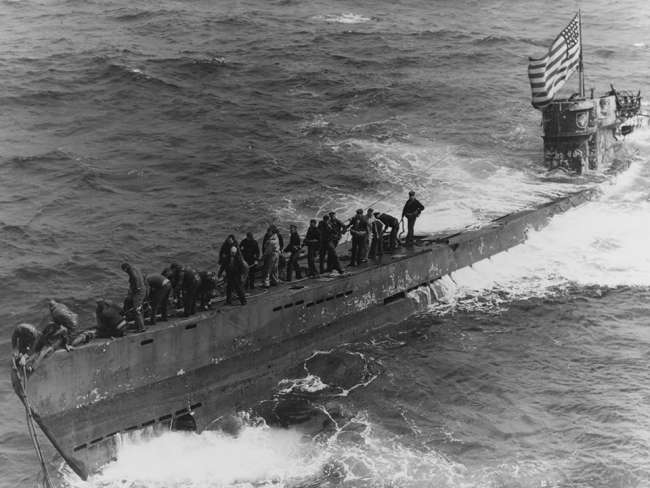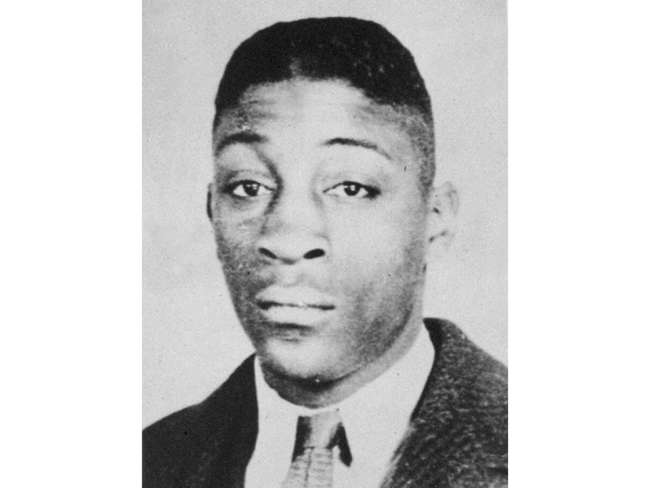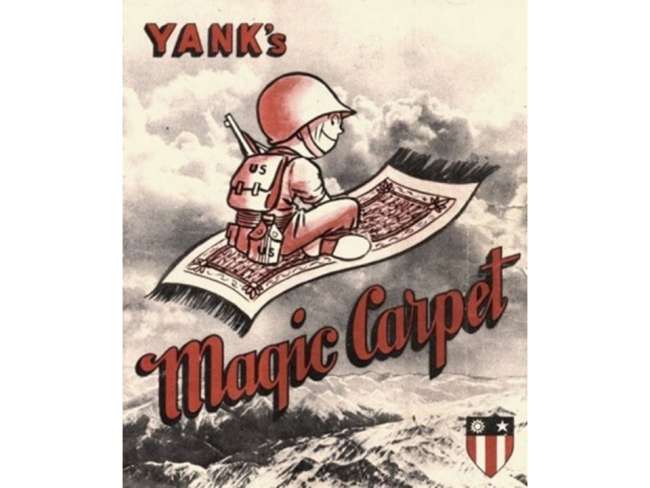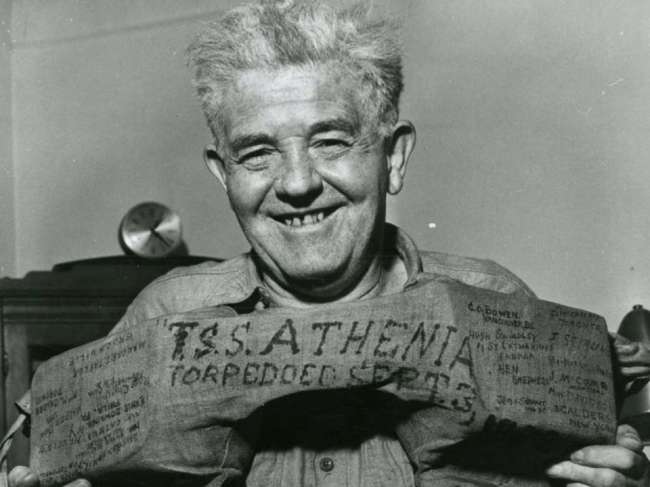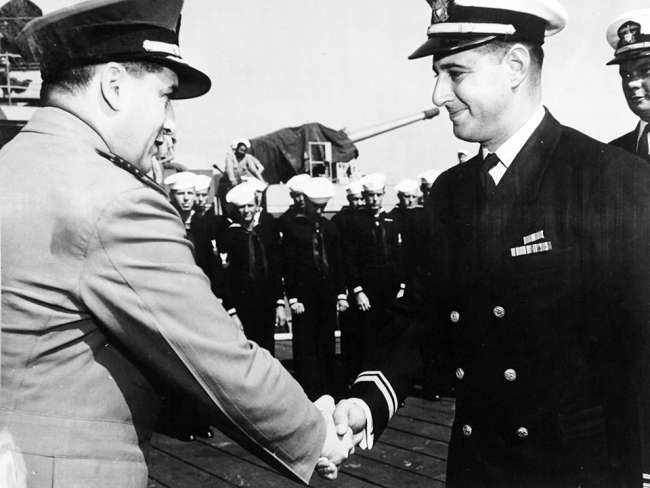Prior to the Japanese attack on Pearl Harbor, the US Navy conducted “neutrality patrols” in the North Atlantic. These patrols, which began with the 1939 outbreak of war, consisted of US Navy vessels sailing in a declared “neutrality zone” as a deterrent to German attacks on American merchant shipping. In 1941, US President Franklin Delano Roosevelt extended the US zone far out into the Atlantic in response to the German U-boat (submarine) threat to British supply lines bringing urgently needed war matériel from US factories.
Sidney Larriviere, from Youngsville, Louisiana, was serving on a neutrality patrol aboard the USS Kearny (DD-432) when disaster struck.
Beginning in August 1941, US Navy destroyers began escorting convoys of merchant ships as far as Iceland in order to relieve pressure on the beleaguered Royal Navy, which was stretched thin due to its global commitments and ship losses. On September 4, 1941, the USS Greer (DD-145) became the first US Navy warship to fire at a German submarine when it engaged the U-652 after it fired torpedoes. President Roosevelt issued his “shoot on sight” order to protect ships under US Navy escort in response to the attack and to escalating tensions with the Germans. It was in this chaotic environment the USS Kearny (DD-432) was operating when it was sent to help Convoy SC 48, which was under attack by German U-boats on October 17. Unfortunately for the Kearny, the Germans were waiting.
A German “wolf pack” of U-boats attacked and overwhelmed the escort ships of Convoy SC 48. The Kearny and three other US destroyers left Iceland to come to the assistance of the convoy. After arriving on the scene and dropping depth charges, the Kearny was hit on its starboard side by a torpedo fired by the U-568. The attack killed 11 men and wounded 22.
Larriviere was among the sailors killed by the blast. He was the first Louisiana servicemember to perish during World War II, two months before the Pearl Harbor attacks. His family received letters of condolence from many civilian and military officials, including Admiral Chester Nimitz, Louisiana Governor Sam Jones, and Joel Fletcher, president of Southwestern Louisiana Institute (now University of Louisiana at Lafayette). With correspondence pouring in from across the country, Sidney’s family kept a scrapbook of it all. This scrapbook is now on display in the Museum’s current special exhibit, The Pelican State Goes to War: Louisiana in World War II. Three of the letters are displayed below.
Unfortunately, the attacks in the Atlantic did not stop with the Kearny. Another US Navy destroyer, the USS Reuben James (DD-245), was attacked and sunk by the U-552 on October 31, 1941. Only 44 crewmembers survived the attack; 100 men died. Another month of cat-and-mouse attacks unfolded before the Japanese assault on Pearl Harbor officially brought the United States into World War II.
-

Letter from Southwestern Louisiana Institute President Joel Fletcher to Sidney Larriviere’s mother. Gift in Memory of Sidney Gerald Larriviere, 2015.032.001
-

Letter from Louisiana Governor Sam Jones to Sidney Larriviere’s mother. Gift in Memory of Sidney Gerald Larriviere, 2015.032.001
-

Letter from Admiral Chester Nimitz and the US Navy to Sidney Larriviere’s mother. Gift in Memory of Sidney Gerald Larriviere, 2015.032.001

The Pelican State Goes to War
Explore Louisiana's many contributions to Allied victory in World War II in this special exhibit, on display through April 2018.
James Linn
A New Orleans native, James Linn first became involved with the institution then known as The National D-Day Museum in 2001 as an eighth-grade volunteer on weekends and during the summer. Linn joined The National WWII Museum staff in 2014 and served as a Curator until 2020.
Cite this article:
MLA Citation:
APA Citation:
Chicago Style Citation:
